DMM Owon B35T
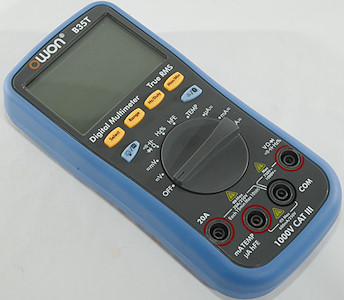
Own has a couple of multimeters in this "35" series with some differences. The "B" models has Bluetooth, the "T" models has true RMS and the "+" model has memory for offline logging. I look at the model with Bluetooth and true RMS, but without offline logging.

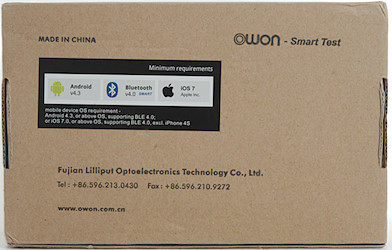

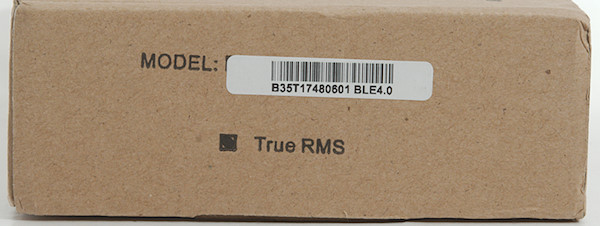
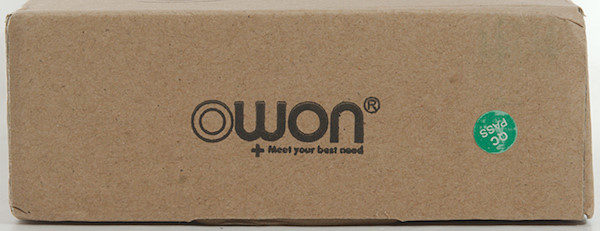
The meter arrived in a brown cardboard box with a minimum of text on it.
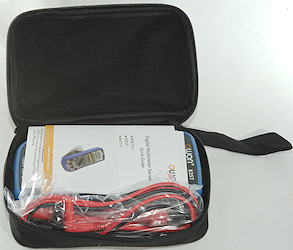
Inside was a pouch with everything in it.
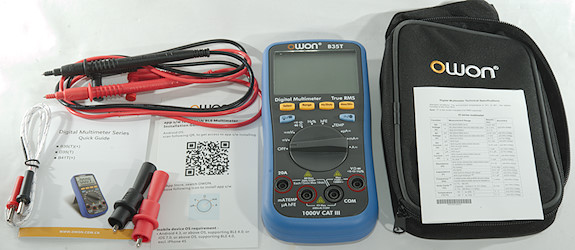
The box/pouch included the meter, probes, alligator clips, a thermocoupler, transistor tester adapter, pouch, quick guide, specifications, QR code for link to app.



Probes are marked 1000V 10A and the tip cover is marked CAT III, without the cover there is a CAT II marking.
The tip cover is screw on/off, the alligator clips are also screw on/off.
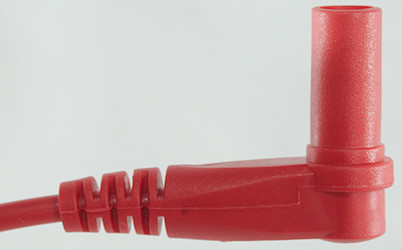
The plugs has are fully shroud, but a bit on the short side.
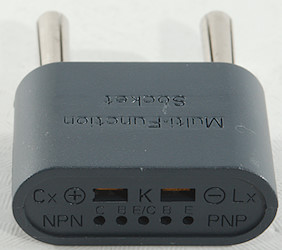
The transistor tester, thermocoupler, capacitor adapter. This way the transistor tester is safe.


A cheap thermocoupler with banana plugs, but notice the black plug is on the red wire (There is a reason for that).
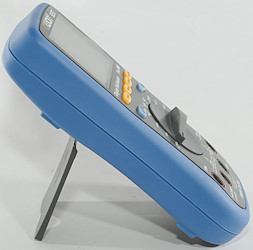
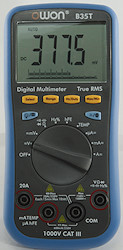

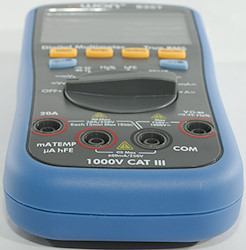

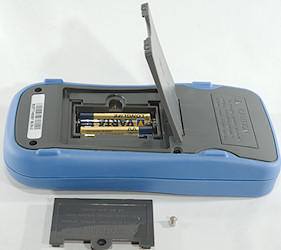
I do not like the plastic for the battery lid, I have the feeling that it is a hard plastic that easily breaks.
Display

The above picture shows all the segments on the display.
The meter do not use all segments.

Normal DC voltage with voltage and bargraph.
Functions
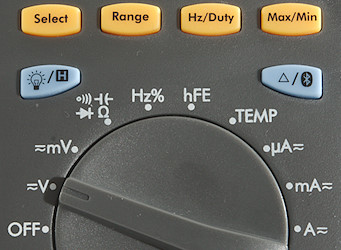
Buttons:
- Select: Select between DC and AC and modes in the ohm position.
- Range: Switch to manual range and select range, hold down to activate automatic ranging again.
- Hz/Duty: Select frequency and duty cycle in AC modes and frequency mode.
- Max/min: Capture maximum and minimum values, press to display one or the other, hold down to exit mode.
 : Press to freeze/unfreeze current reading, hold down to turn on background light,
: Press to freeze/unfreeze current reading, hold down to turn on background light,
 : Press to use relative mode (REL), hold down to enable/disable Bluetooth.
: Press to use relative mode (REL), hold down to enable/disable Bluetooth.
REL and Max/min disables auto range.
Rotary switch:
- Off: Meter is turned off.
- V: Measure DC and AC voltage, DC includes a mV range, in AC it is possible to select frequency.
- mV: Millivolt range, has two mV ranges for both DC and AC, in AC it is possible to select frequency.
 : Resistance, diode, continuity and capacitance
: Resistance, diode, continuity and capacitance
- Hz%: Frequency, this support up to 10MHz.
- hFE: Can check transistors with the supplied adapter.
- Temp: Temperature.
- uA: The uA range, in AC it is possible to select frequency.
- mA: The mA range, in AC it is possible to select frequency.
- A: The A range, in AC it is possible to select frequency.
Input
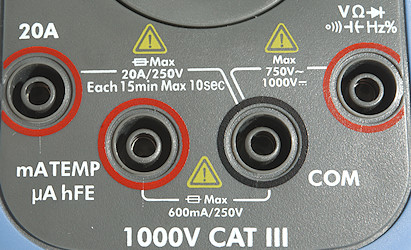
- A: High current, maximum current is 20A
- mAuA: The lower current ranges and input for thermocoupler (Note polarity is reversed) and transistor tester.
- CON: The common terminal for all ranges.
- xxx: All other ranges.
Measurements
- Volt and frequency
- Frequency input do not require a zero crossing
- At 100mVrms frequency input range is from 0.3Hz to 1.6MHz
- At 1Vrms frequency input range is from 0.3Hz to 14MHz
- Duty cycle works from 5% to 90% at 10kHz with 1Vpp, precision is within 5.7
- Duty cycle works from 1% to 99% at 10kHz with 2Vpp, precision is within 1.2
- 1 VAC is 5% up at 70kHz (RMS will not work at the frequency).
- Max/min needs about 200ms to capture a voltage, it may needs multiple pulses.
- Input impedance is 10-11Mohm on DC and AC, except mVDC that is high impedance
- mV in mV position has 10Mohm input impedance up to about 0.8V, then it drops to 100kOhm at 5 3olt and 2kOhm at 20 volt.
- Meter has two mVDC ranges, one in the V position and one in the mV position
- There is an audible warning when voltage is too high on mV (600mV) or V (750/1000V) range.
- Frequency input is 10Mohm up to 12 volt then it drops to 2kohm at 20 volt
- Rated overload protection on V is 1000VDC / 750VAC
- Rated overload protection on mV is 250VDC or equivalent AC
- Current
- Overload protection in uA and mA: 1A/250V 5x20mm glass fuse
- Overload protection in A: 20A/250V 5x20mm ceramic fuse
- Measuring above 10A must only be performed for a short time.
- Ohm, continuity, diode and capacitance
- Ohm needs about 2.9s to measure 100ohm
- Ohm is 0.64V open and 0.34mA shorted
- Continuity is quick (80ms).
- Continuity beeps when resistance is below 21ohm
- Continuity is 0.64V open and 0.34mA shorted
- Diode range uses 2.6V, max. display is 1.999V at 0.3mA, max. current is 1.2mA shorted
- 10uF takes about 2.7 seconds to measure.
- 4000uF takes about 30 seconds to measure.
- Rated overload protection is 250VDC or equivalent AC
- Miscellaneous
- Polarity of temperature input is reversed, the plugs on the thermocoupler is also mounted reverse.
- Current consumption of meter is 2.3mA and 3.2mA depending on range (AC adds 0.5mA). AC with backlight is 20mA, AC with Bluetooth is 13mA (Everything together is about 28mA).
- Meter works down to 1.8V where it turns off, battery symbol show at 2.3V.
- The meter reading is stable at any battery voltage.
- Backlight fades with voltage and is very dim at 2.5V
- Bluetooth works until meter turns off due to low battery.
- Bluetooth cannot automatic recover a broken connection.
- The meter needs a couple of updates before the reading is fully correct.
- Viewing angle is good
- Display updates around 3 times/sec.
- Bargraph updates 30 times/sec
- Backlight will turn off in 47 seconds
- Will automatic turn power off in about 15 minutes
- Standard probes cannot be fully inserted into sockets on meter, but make connection, banana plugs can be fully inserted.
- Weight is 335g without accessories, but with batteries.
- Size is 185 x 88 x 45mm.
- Probes
- Probe resistance 31mOhm for one.
- Probe wire is soft and 89cm long.
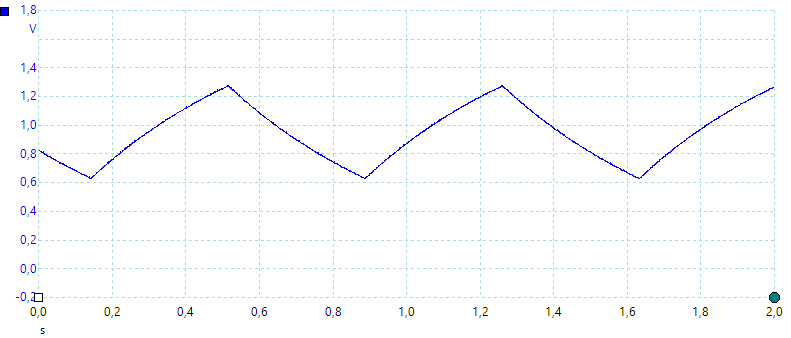
A look at the capacitance measurement waveform.

Frequency input resistance.
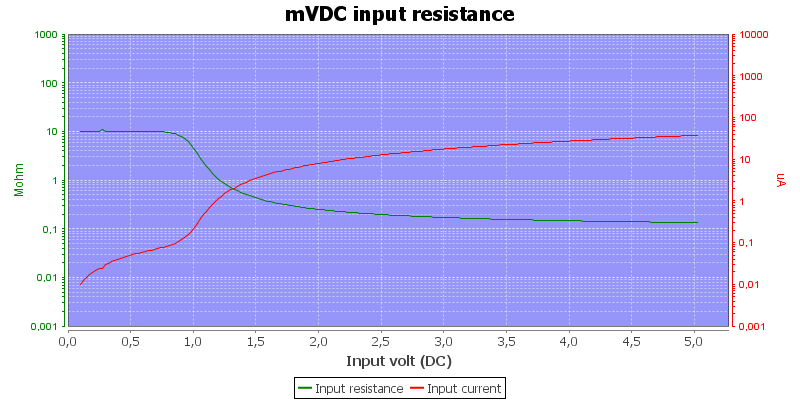
Input impedance on mV range, on V range the mV input has high input impedance, but not here.

The 40nF range has a -0.2nF offset, using REL the offset will be +0.2nF instead (The negative offset will only be visible as too low readings when measuring a capacitor).
Battery time is without Bluetooth, with Bluetooth it is around 200 hours.
Large DC voltage will block for AC readings.
Software Android
The Bluetooth phone software must be downloaded from Owon site and requires access to phone information, contacts, location and storage. I disabled the phone and contact access and the application still works.
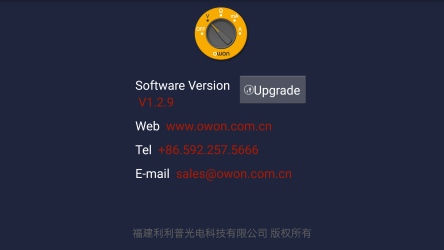
The software I got was V1.2.9 and I downloaded the Bluetooth 4 version. The program is called "MultimeterBLE" on Android.
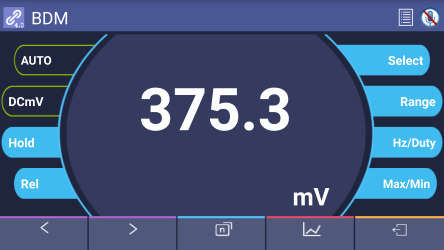
The typical meter display, the blue fields will activate buttons on the meter (it is still possible to use the button on the meter).
The microphone will enable English voice annotations of the value, the language is not perfect but understandable. The menu besides the microphone is used for meters with internal logging.
The software will only work in landscape mode.
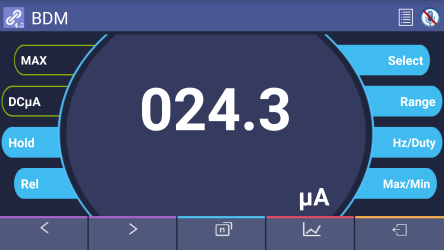
Here max/min has been activates, it is shown, but could have been more obvious.
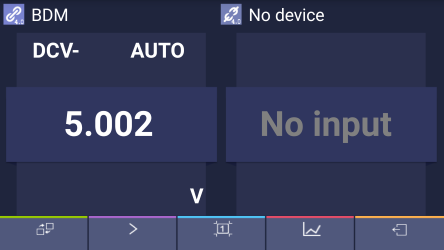
The software can support more than one meter, I only had one meter and have not tried this function.

The logging mode, it shows a curve and a table, this data is also collected when showing the other display.
The chart has some problems: It do not change scale between mV and V, i.e. 600mV is shown as 600 and 2V is shown as 2 on the chart, this can occur in the same chart! This means it may be necessary to use the RANGE switch to get consistent charts.
I did not find a way to stretch the chart or table to full screen width. The chart and table will not reset if the range switch is turned, it will just continue to add data.
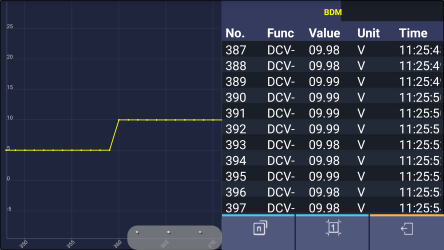
It is possible to zoom in/out on the curve, either with the buttons in the gray area or with two fingers.
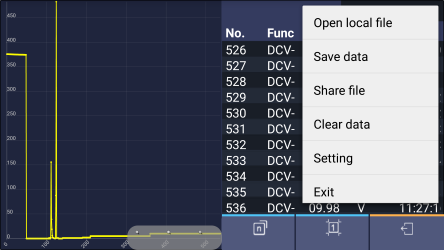
On this screen the menu has function to save the data and share the saved data. I shared it with an email program and received the email on my PC.
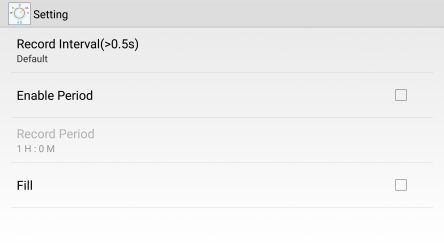
The settings can be used to adjust the sample interval and to set a time limit on how long to record the data. The "Fill" option will add a blue shading below the curve.

The data is saved in a csv file using US format and without any headers, this means I cannot directly import it into Excel (I need to specify format each time).
The protocol is documented on Github and there is also a Linux program for communicating with the meter.
Tear down
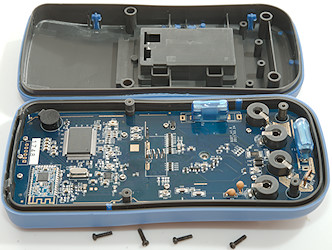
I had to remove four screws to open the meter
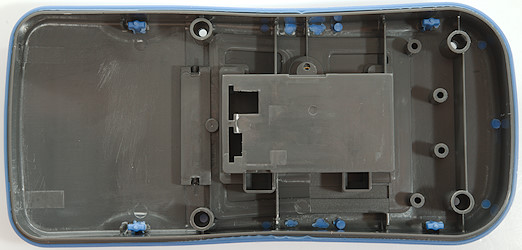
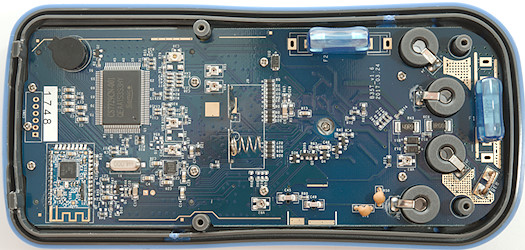
The fuses have a cover on them, the 20A one has a bit heat damage from my 20A test.

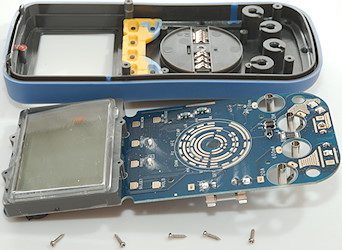
Five more screws must be removed to get the circuit board out.

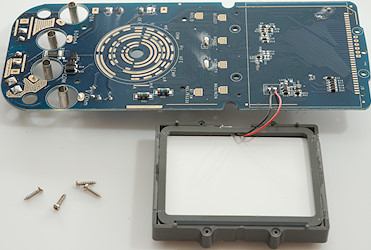
And four screws to remove the LCD display with backlight.
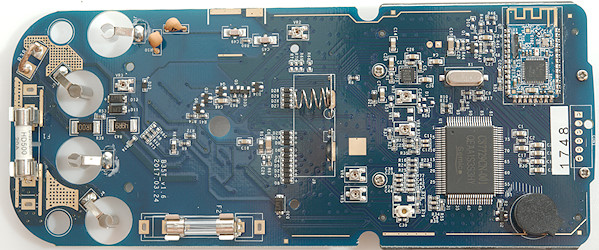
The two fuses are rather small, but there is space for larger fuses on the circuit board, this probably means a meter bought from a EU distributor will have a large fuse. The 20A shunt (R38) is rather small, this is probably the reason for the time limit. The mA shunt is two resistor (R39 & R40: 2x1ohm) in parallel, one on each side of the circuit board. The uA shunt is the next resistor (R43: 49.9ohm). These resistors have about half the usual resistance, this is very nice for burden voltage. The uAmA shunts are protected by some diodes (D11, D12, D13, D14),
The voltage input has two paths, both with a PTC (R50 & RT1: 1kOhm), the main voltage input goes to two resistors, bypassed with two capacitors and a resistor (R22 & R33: 5Mohm, C45 & C49 & R80: 100kOhm). This improves the frequency response. The ohm range uses two transistor pair for protection (Q3, Q4, Q5, Q8), together with the two PTC's. Frequency uses one transistor pair (Q4 & Q5).
I expect many of the diodes is used to encode the range switch for the multimeter IC.
The main meter IC is from Semic (U1: CS7729CN-001) with an external RMS converter (U10: AD8439JCPZ). The Bluetooth interface is a module (Chip is CC2541).
The meter has a couple of trimpots (V2, VR3, VR4, VR5, VR6, VR7) and a trim capacitor (C39).

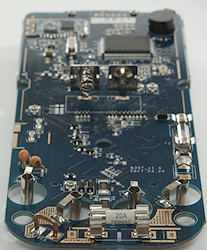
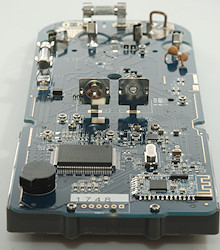

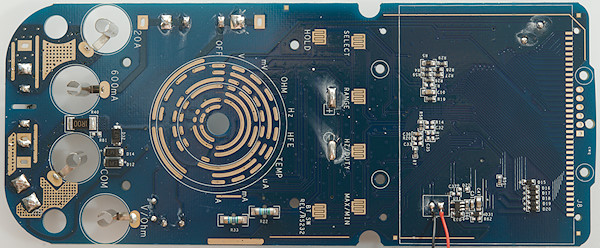
On this side is all the pads for the range switch, the buttons and the LCD connection. There is also one of the mA current shunt resistors (R40) and protection diodes (D12 & D14). The main voltage input resistor is two resistors (R22 & R33).

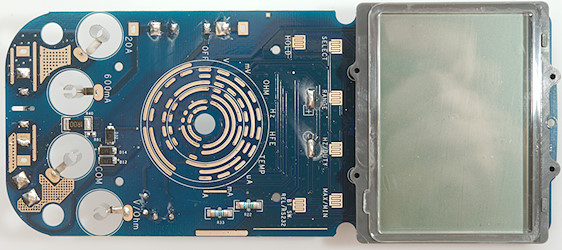
Conclusion
As is often the case the CAT rating is way optimistic, 250V 20mm glass fuse do not belong in a 1000V CAT III meter. The lack of MOV's and the small PTC's without series resistor will also limit the ability to handle high voltage transients.
This meter has all the normal ranges for a competent meter and has a nice fast bargraph, but lacks any advanced functions. The input protection is fine for occasionally mains use. The lower shunt resistance (Burden voltage) in current ranges is nice, Bluetooth can be used for logging data at fairly short ranges
Notes
How do I review a DMM
More DMM reviews
 : Press to freeze/unfreeze current reading, hold down to turn on background light,
: Press to freeze/unfreeze current reading, hold down to turn on background light,
 : Press to use relative mode (REL), hold down to enable/disable Bluetooth.
: Press to use relative mode (REL), hold down to enable/disable Bluetooth.
























 : Press to freeze/unfreeze current reading, hold down to turn on background light,
: Press to freeze/unfreeze current reading, hold down to turn on background light,
 : Press to use relative mode (REL), hold down to enable/disable Bluetooth.
: Press to use relative mode (REL), hold down to enable/disable Bluetooth.
 : Resistance, diode, continuity and capacitance
: Resistance, diode, continuity and capacitance




























